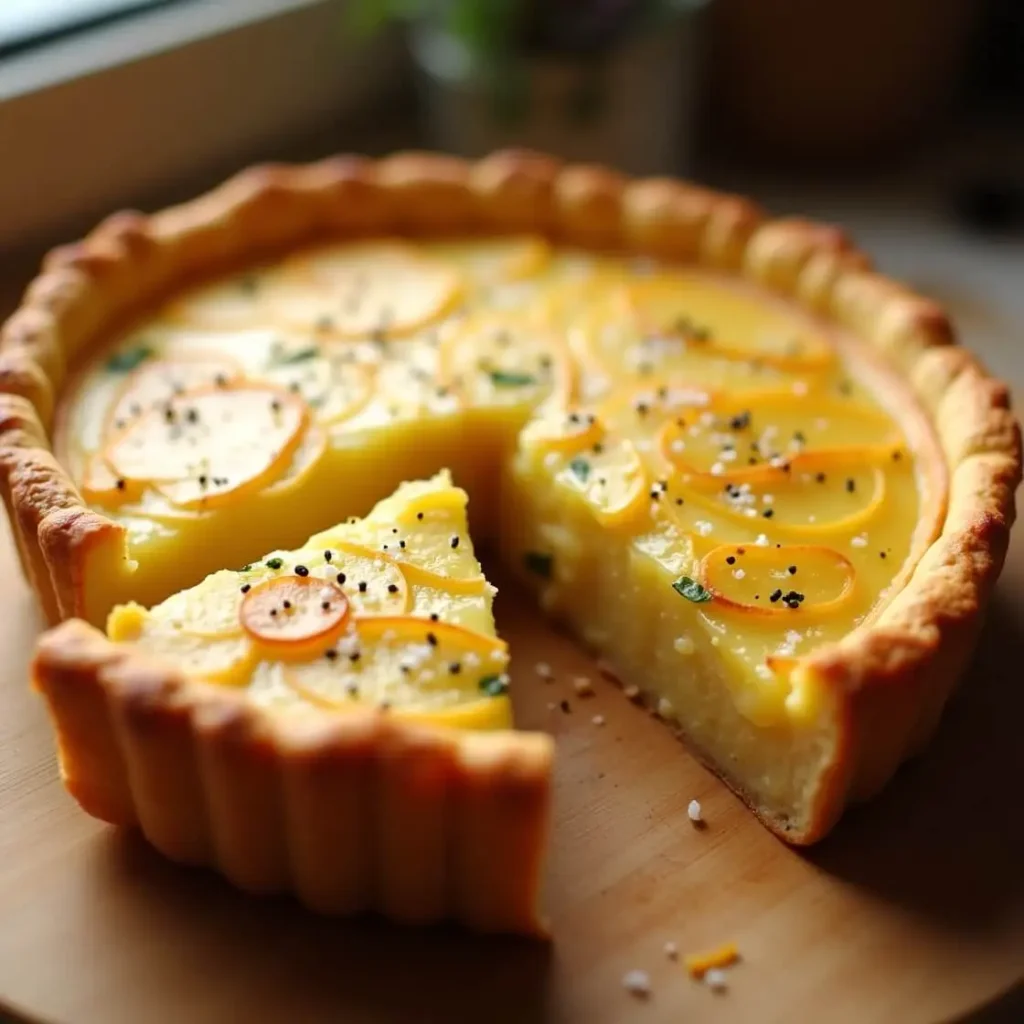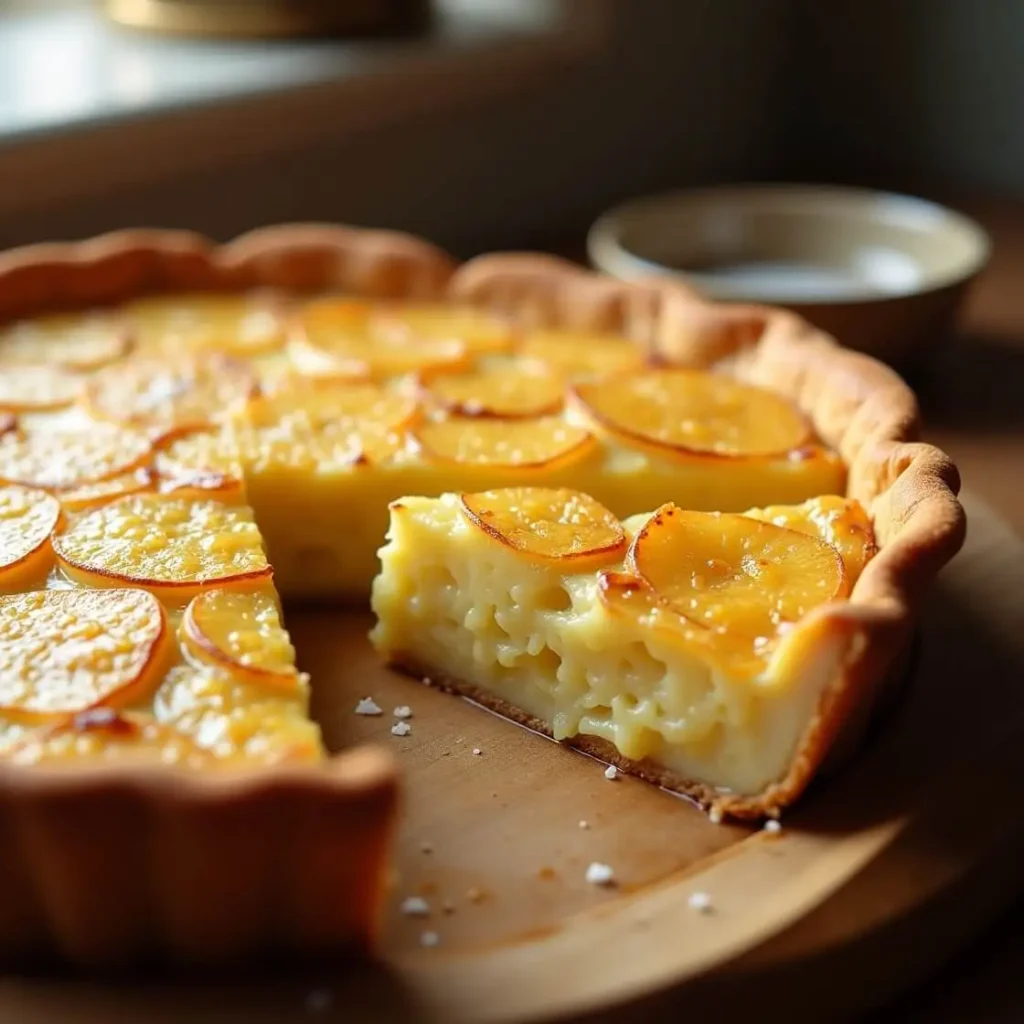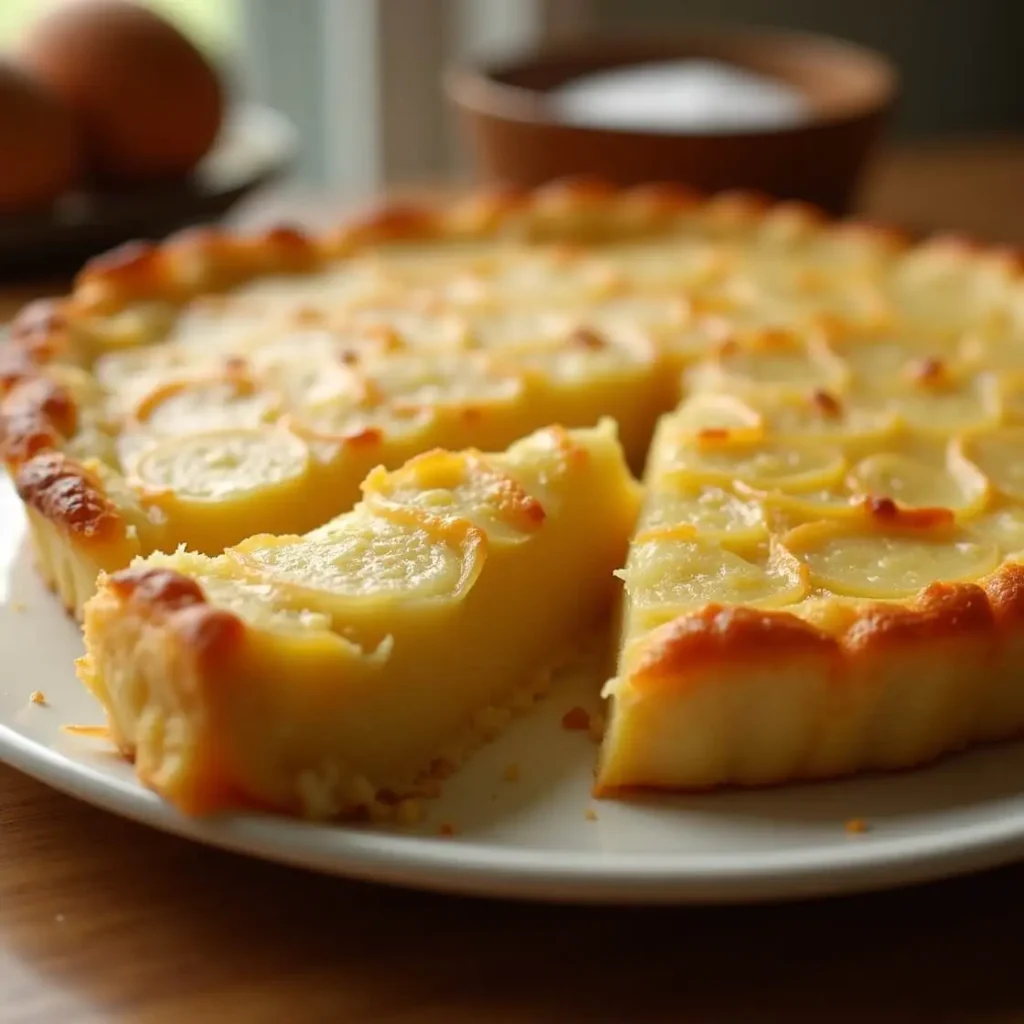Passover Potato Pie: A Delicious and Traditional Recipe
Passover potato pie is a traditional dish enjoyed during the holiday, offering a delicious alternative to leavened dishes. Since grains like wheat and barley are prohibited, potatoes become an essential ingredient in unleavened recipes. They provide a hearty and versatile base, making them a staple on the Seder table. This dish follows kosher guidelines and is a comforting choice for those seeking a satisfying Passover meal.
There are many variations of Passover potato pie, catering to different dietary needs. Some recipes are dairy-free, while others incorporate a matzo meal crust for added texture. Gluten-free versions are also popular, ensuring everyone can enjoy this beloved dish. Whether served as a side or main course, Passover potato pie remains a key part of the holiday table, bringing both tradition and rich flavors.

Ingredients Needed for Passover Potato Pie
Essential Ingredients for a Classic Recipe
A classic Passover potato pie relies on simple, kosher-friendly ingredients that enhance its flavor and texture. Key Elements Explained:
| Ingredient | Purpose |
|---|---|
| Potatoes (Russet or Yukon Gold) | The base ingredient, providing starch and structure. |
| Eggs | Acts as a binder to hold the pie together. |
| Olive Oil | Adds moisture and enhances flavor while keeping the dish kosher. |
| Kosher Salt | Essential for seasoning, following dietary laws. |
| Matzo Meal | Provides texture and helps bind ingredients. |
| Onion (optional) | Adds depth of flavor and sweetness. |
| Garlic (optional) | Enhances the savory taste. |
These ingredients ensure that Passover potato pie remains authentic, flavorful, and suitable for the holiday. Adjustments can be made based on dietary preferences while keeping the dish kosher for Passover.
Substitutes for Dietary Restrictions
For those with dietary restrictions, substitutions allow for a variety of Passover potato pie adaptations:
- Egg-Free Option: Use a flaxseed or chia seed mixture (1 tablespoon seeds + 3 tablespoons water per egg) as a binder.
- Matzo Meal Substitute: Almond flour or potato starch can replace matzo meal for a gluten-free alternative.
- Dairy-Free Variations: If adding cheese, opt for non-dairy cheese alternatives or nutritional yeast for a cheesy flavor.
- Root Vegetable Pie: Swap potatoes with sweet potatoes, carrots, or parsnips for a different take on the dish.
- Lower-Carb Version: Cauliflower or turnips can replace potatoes while maintaining a similar texture.
These variations allow everyone to enjoy a Passover potato pie that fits their dietary needs without compromising tradition.
Must-Have Kitchen Tools
To prepare a Passover potato pie, you’ll need the following essential kitchen tools:
- Mixing Bowl: For combining ingredients and ensuring even distribution.
- Potato Masher or Grater: Helps break down potatoes for the desired texture.
- Baking Dish: Holds the mixture and allows even baking.
- Oven: Ensures proper cooking and a golden-brown crust.
- Knife & Cutting Board: For prepping onions, garlic, and any additional vegetables.
- Whisk or Fork: To beat eggs and mix ingredients thoroughly.
Having the right equipment makes preparation simple and efficient, ensuring a perfect result every time. Whether following a traditional recipe or an alternative version, this dish remains a cherished part of the holiday table.

Step-by-Step Recipe for Passover Potato Pie
Creating the Perfect Potato Crust
A potato-based crust is an excellent alternative to flour-based versions, making it perfect for Passover. For a deliciously crispy base:
- Grate the Potatoes: Use Russet or Yukon Gold potatoes for the best texture. After grating the potatoes, remove excess moisture by pressing them with a clean kitchen towel.
- Season the Crust: In a bowl, mix the grated potatoes with olive oil, kosher salt, and a bit of matzo meal to help bind the crust.
- Form the Crust: Press the potato mixture into a greased baking dish, ensuring an even layer on the bottom and slightly up the sides.
- Pre-Bake for Crispiness: Bake at 375°F (190°C) for 10-15 minutes until it begins to turn golden. This step helps create a firmer base before adding the filling.
This pie with a potato crust ensures a delicious and Passover-friendly foundation for the dish.
Preparing a Flavorful Filling
The filling of a Passover potato pie is rich, creamy, and simple to prepare:
- Prepare the Potatoes: Boil peeled and cubed potatoes until soft, then drain and mash them until smooth.
- Combine Ingredients: In a mixing bowl, blend the mashed potatoes with eggs, olive oil, kosher salt, and seasonings like black pepper and garlic powder.
- Optional Additions: For extra flavor, mix in sautéed onions, fresh herbs like parsley, or grated carrots for a twist on a root vegetable pot pie.
- Layer the Filling: Spread the mixture evenly over the pre-baked potato crust, ensuring a smooth surface for even baking.
This traditional Passover food maintains a soft yet firm consistency, making it a satisfying dish during the holiday.
Baking and Serving Suggestions
Once the crust and filling are prepared, it’s time to bake and serve this classic Passover dish:
- Bake Until Golden: Place the pie in a 375°F (190°C) oven for 30-40 minutes, or until the top turns golden brown.
- Cool Slightly Before Serving: Let the pie sit for 5-10 minutes before slicing to ensure it holds its shape.
- Pair with Other Passover Dishes: Serve warm alongside Seder meal recipes like brisket, roasted vegetables, or matzo ball soup.
- Storage Tips: Leftovers can be stored in the refrigerator for up to 3 days and reheated in the oven to maintain crispness.
This simple holiday pie is a delicious and versatile addition to any Passover table, making it a cherished recipe for generations to enjoy.
Tips and Tricks for the Best Passover Potato Pie
Achieving the Perfect Texture for Passover Potato Pie
To get a fluffy yet firm Passover potato pie, it’s essential to use the right potato variety and avoid over-mashing. Russet or Yukon Gold potatoes are ideal because they provide the right texture and starch for a cohesive filling. Be sure to mash the potatoes just enough to achieve a smooth texture while keeping some of the natural fluffiness. Over-mashing can lead to a dense, gluey consistency. Additionally, ensure the potatoes are thoroughly drained after boiling to prevent excess moisture, which can make the pie soggy. These simple steps help create a perfectly textured pie that is both light and satisfying.
Enhancing Flavor with Seasonings in Passover Potato Pie
To elevate the flavor of your Passover potato pie, consider adding fresh herbs, garlic, and onions. Garlic gives a rich, aromatic base, while sautéed onions bring out a sweet, savory depth of flavor. Fresh herbs like parsley or thyme add a fragrant note that complements the earthiness of the potatoes. These ingredients blend well with the traditional kosher elements of the dish, enhancing its taste while staying true to your cuisine. For an even more flavorful experience, try adding a pinch of kosher salt or black pepper for a balanced seasoning. This extra attention to flavor will make your potato pie a standout dish on the Seder table.
Storing and Reheating Passover Potato Pie
Proper storage ensures that your Passover potato pie remains fresh for later meals. Once the pie has cooled to room temperature, cover it tightly and store it in the refrigerator for up to 3 days. To reheat, place the pie in a preheated oven at 350°F (175°C) for 20-30 minutes, until it is heated through and the crust becomes crispy again. If you prefer to enjoy it later, you can even freeze it for up to a month. Simply cover it well before freezing and reheat directly from the freezer. This method helps retain the quality of baked potato dishes and ensures that your dairy-free potato pie stays as delicious as the day it was made.

Conclusion
Passover potato pie is a delicious, versatile, and kosher-friendly dish that perfectly complements the holiday meal. Whether you choose the classic recipe or modify it to fit specific dietary needs, this pie offers a satisfying and flavorful addition to your Seder meal recipes. Its ability to adapt while staying true to traditional food makes it a must-try for anyone celebrating Passover. You can even enjoy it as part of your breakfast meals for a hearty start to the day.
Frequently Asked Questions (FAQ)
Can I Make This Pie Without Matzo Meal?
Yes! If you prefer a matzo meal crust or need a substitute, there are several options available to fit your dietary needs. Almond flour or ground nuts can be used as a gluten-free alternative to matzo meal, providing a rich, nutty flavor and a similar texture. If you need to keep the dish fully unleavened, you can also use more mashed potatoes to bind the crust. These substitutions work wonderfully in creating a gluten-free potato dish while maintaining the integrity and taste of the original recipe. Feel free to experiment with different ingredients to find the perfect alternative that fits your needs!
Is This Dish Suitable for a Dairy-Free Diet?
Absolutely! You can easily make Passover potato pie dairy-free by simply replacing any dairy ingredients with non-dairy alternatives. Use olive oil instead of butter, and skip any cheese or milk-based ingredients. Olive oil adds a rich, savory flavor that complements the natural taste of the potatoes. For an extra boost of flavor, try adding herbs or spices in place of dairy, and you’ll still have a delicious dairy-free potato pie that’s perfect for your Passover meal ideas.
How Can I Add More Protein to This Dish?
To make your Passover potato pie more nutritious and protein-packed, consider incorporating protein-rich ingredients. Adding eggs to the filling is a simple way to boost protein while maintaining the traditional flavor. You can also try adding nuts such as walnuts or almonds for a crunchy texture and additional protein. If you want a heartier version, you can even layer the pie with a protein-rich filling like ground turkey or chicken, making it a more complete meal. These additions make the pie more filling and nutritious while still staying true to the essence of traditional Passover food.
For more savory meal ideas, check out these recipes:

